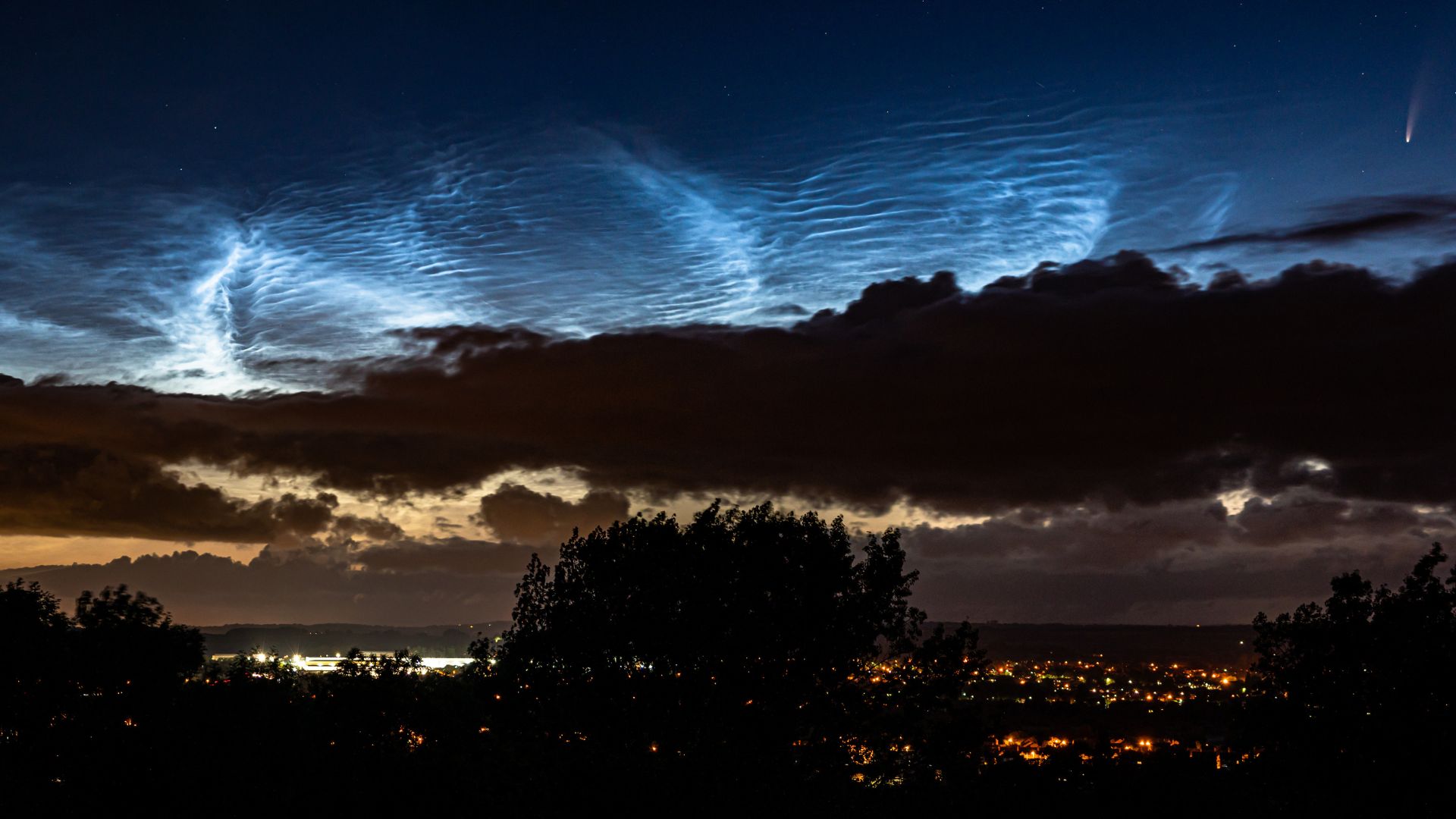Table of Contents:
- Introduction
-
Solar Halos
- 2.1 22° Halo
- 2.2 46° Halo
- 2.3 Sun Dogs
- 2.4 Circumzenithal Arc
-
Aurora
- 3.1 Aurora Borealis
- 3.2 Aurora Australis
-
Glowing Skies
- 4.1 Noctilucent Clouds
- 4.2 Airglow
- Light Pillars
-
Rainbows
- 6.1 Primary Rainbow
- 6.2 Secondary Rainbow
- 6.3 Alexander’s Dark Band
- 6.4 Supernumerary Rainbows
- 6.5 Reflection Rainbows
- Conclusion
- FAQs
Introduction
Have you ever marveled at the sky’s mesmerizing display of colors and wondered what causes these fascinating phenomena? From the breathtaking beauty of the northern lights to the brilliant halos surrounding the sun, our atmosphere can create stunning optical effects. This article will dive into the world of atmospheric light phenomena, exploring what they are, how they occur, and where to witness these dancing skies.
Solar Halos

22° Halo
A 22° halo is a circular ring of light that appears around the sun or moon, caused by the refraction of sunlight through ice crystals in the atmosphere. The halo’s radius is approximately 22 degrees, hence its name. These halos can be observed worldwide and are more common than you might think.
46° Halo
The 46° halo is similar to the 22° halo but with a larger radius, approximately 46 degrees from the sun or moon. It is less common than its smaller counterpart and results from sunlight refracting through more hexagonal ice crystals in the atmosphere.
If you’re fascinated by atmospheric light phenomena, you might also be interested in learning about the mysterious Hessdalen Lights in Norway. Check out our article on Hessdalen Lights: The Mysterious Phenomenon in the Norwegian Skies for an intriguing exploration of this enigmatic occurrence.
Sun Dogs

Sun dogs, also known as parhelia, are bright spots of light that appear on either side of the sun, usually at the same elevation. These optical phenomena occur when sunlight refracts through ice crystals in the atmosphere, creating a colorful, mirror-like effect.
Circumzenithal Arc
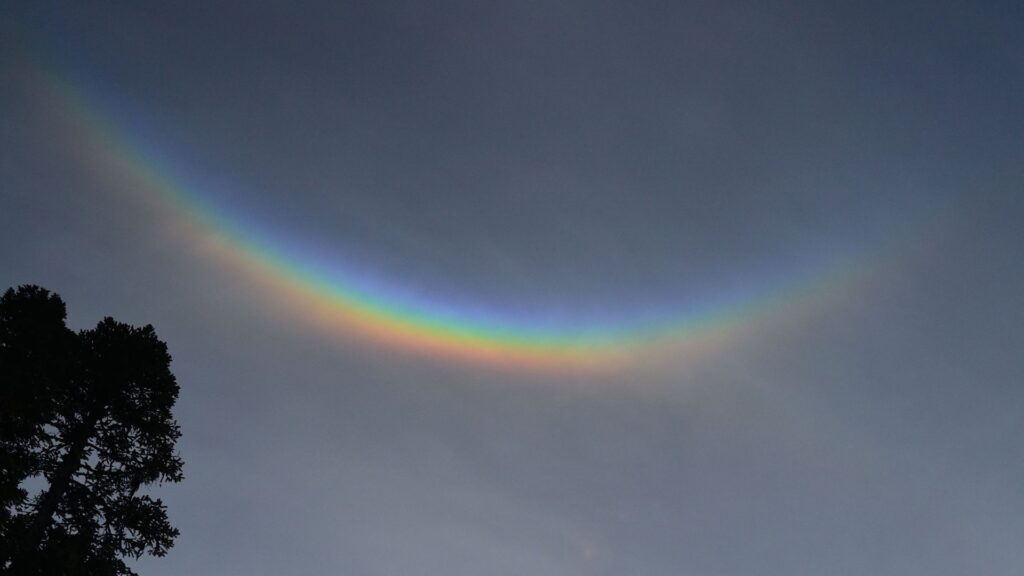
The circumzenithal arc is a vibrant, upside-down rainbow-like arc that appears high in the sky. It occurs when sunlight refracts through ice crystals in the atmosphere, producing a colorful arc that lies above the sun.
Aurora
Aurora Borealis
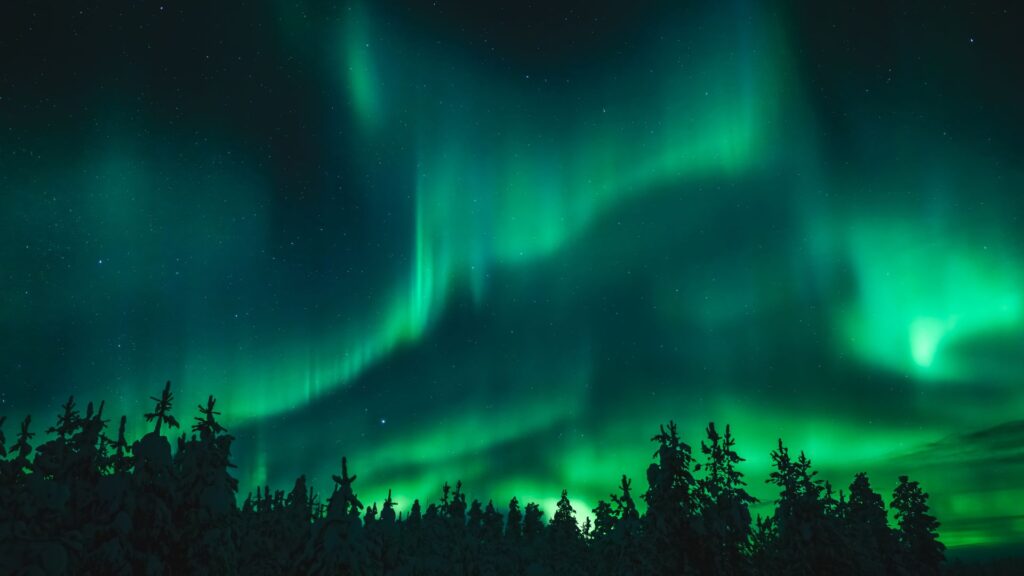
Commonly known as the northern lights, the aurora borealis is a spectacular natural light show seen in the Earth’s northern polar regions. This mesmerizing phenomenon occurs when charged particles from the sun interact with Earth’s magnetic field and atmosphere, creating a breathtaking display of dancing lights.
Aurora Australis
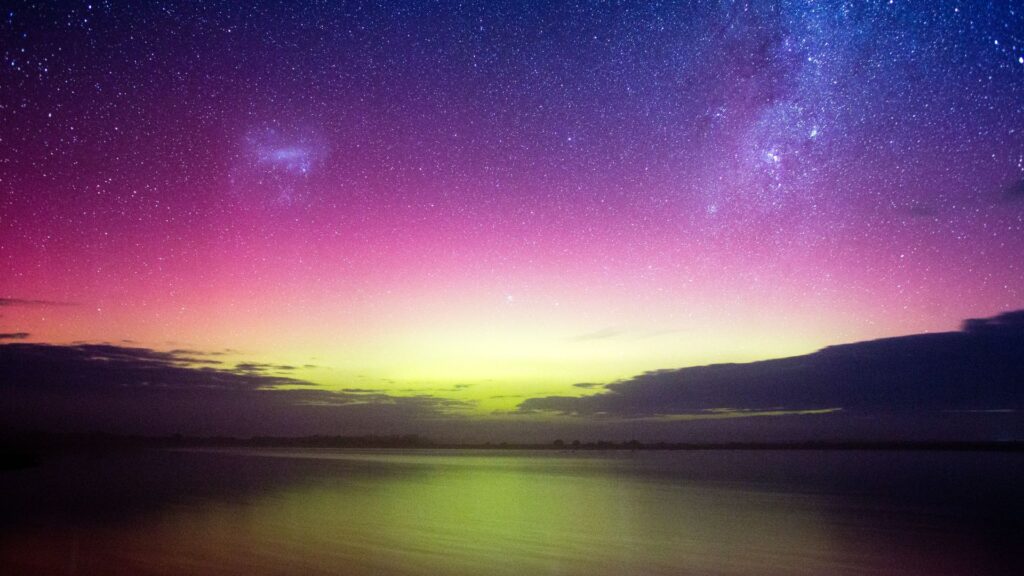
The southern counterpart of the aurora borealis, the aurora australis, or southern lights, offers a similarly stunning light show in the Earth’s southern polar regions. Like its northern counterpart, the aurora australis occurs when charged solar particles collide with Earth’s atmosphere.
Glowing Skies
Noctilucent Clouds
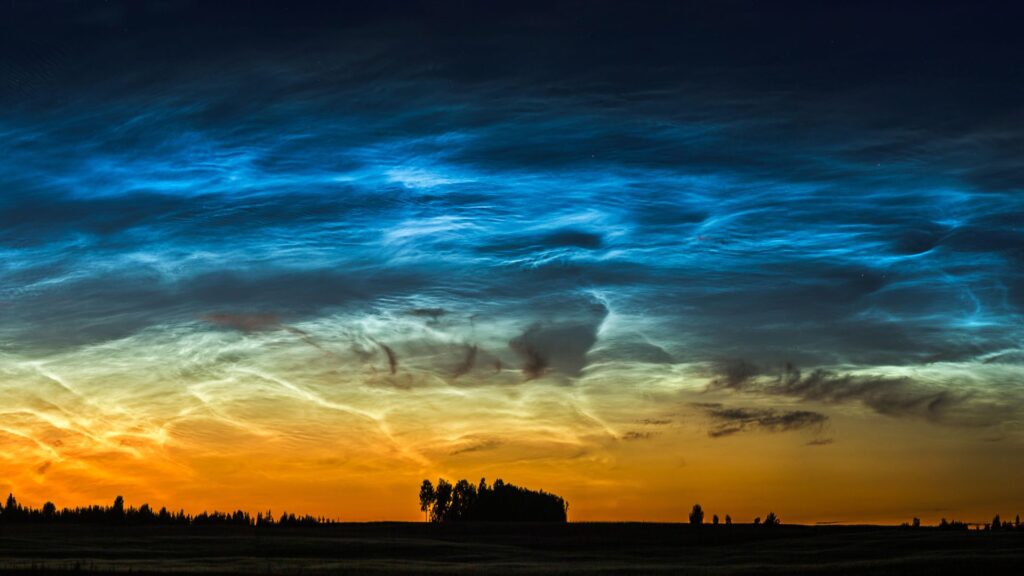
Noctilucent clouds, or night-shining clouds, are a rare atmospheric phenomenon that occurs during the summer months at high latitudes. These luminescent, wispy clouds are formed when ice crystals condense around meteoric dust particles in the mesosphere, approximately 50 miles above the Earth’s surface. Noctilucent clouds are visible after sunset and before sunrise when they are illuminated by sunlight from below the horizon.
Airglow
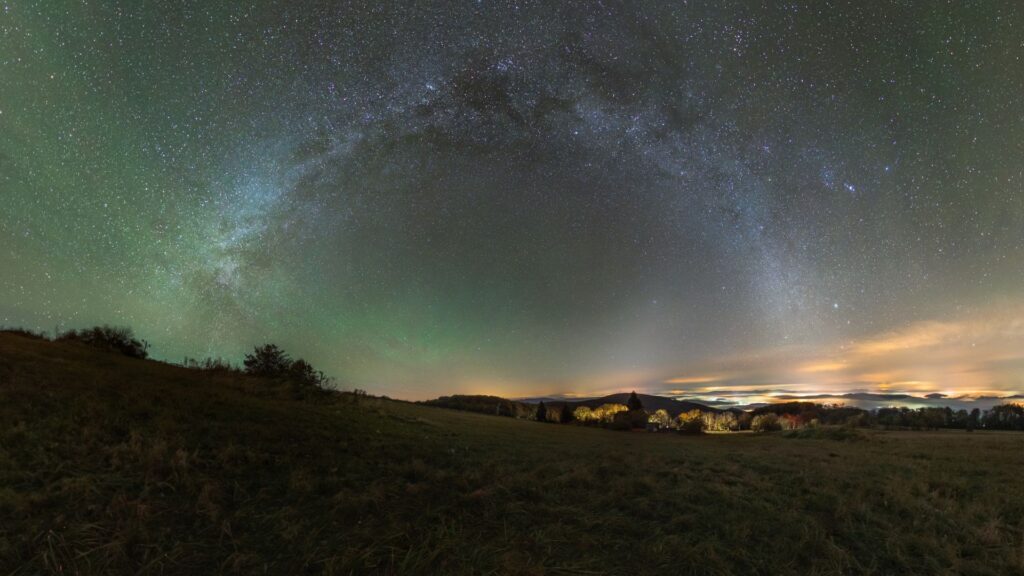
Airglow is a faint, natural glow in the night sky caused by the interaction of sunlight with the Earth’s upper atmosphere. The phenomenon occurs when atoms and molecules in the atmosphere absorb solar radiation and then release it as light. Airglow is most visible on moonless nights and is responsible for the faint background illumination that allows us to see stars.
Light Pillars

Light pillars are vertical columns of light that appear to extend above or below a bright light source, such as streetlights, headlights, or the sun. They are caused by the reflection of light off flat, horizontally-aligned ice crystals in the atmosphere. Light pillars are most commonly observed during cold winter months when ice crystals are more likely to form.
Rainbows
Primary Rainbow

A primary rainbow is a colorful arc that forms when sunlight is refracted, reflected, and dispersed by water droplets in the atmosphere. The arc’s colors appear in a specific order, with red on the outer edge and violet on the inner edge. Primary rainbows are the most commonly observed type of rainbow.
Secondary Rainbow
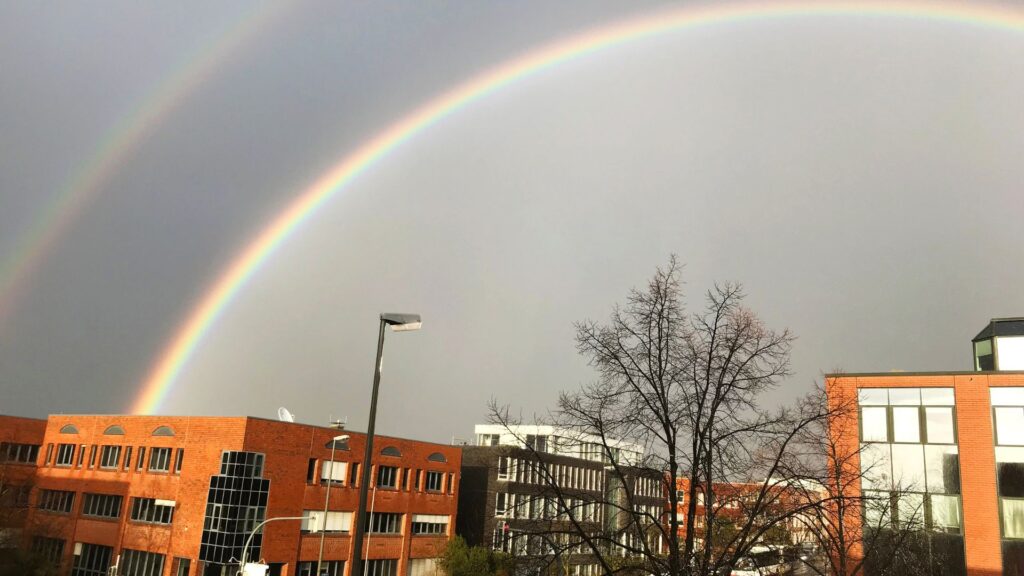
Secondary rainbows form outside the primary rainbow, with a radius of approximately 51 degrees from the antisolar point. They are caused by sunlight undergoing two internal reflections within water droplets before exiting. The colors of a secondary rainbow appear in reverse order compared to the primary rainbow, with red on the inner edge and violet on the outer edge.
Alexander’s Dark Band

Alexander’s dark band is the dark region between the primary and secondary rainbows. It occurs because there is little to no sunlight being scattered into this region. The phenomenon is named after Alexander of Aphrodisias, a Greek philosopher who first described it in the 3rd century AD.
Supernumerary Rainbows
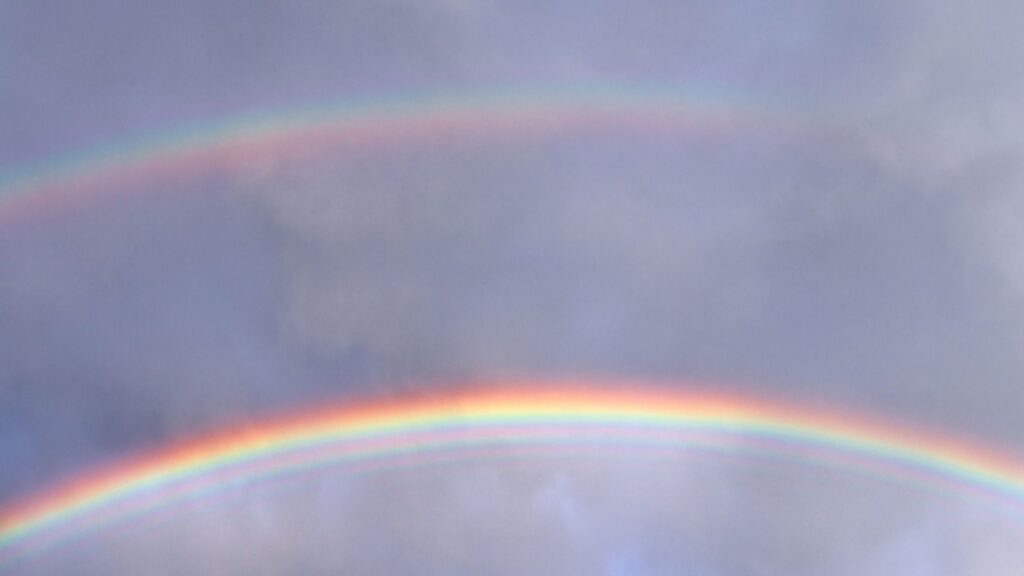
Supernumerary rainbows are a series of faint, closely spaced arcs located on the inner edge of a primary rainbow. They are formed by the interference of light waves, with alternating bright and dark bands. Supernumerary rainbows are more common when water droplets in the atmosphere are small and uniform in size.
Reflection Rainbows

Reflection rainbows occur when sunlight is reflected off a body of water, such as a lake or calm ocean, before being refracted by water droplets in the atmosphere. These rainbows appear as a separate arc below the primary rainbow and are often fainter and less colorful.
Conclusion
Atmospheric light phenomena are awe-inspiring displays of nature’s beauty, showcasing the intricate interplay between sunlight, Earth’s atmosphere, and various environmental conditions. From the vivid colors of rainbows to the ethereal glow of the aurora, these dancing skies serve as a reminder of the wonders our planet has to offer.
FAQs
1. Can I see atmospheric light phenomena anywhere in the world?
Yes, many atmospheric light phenomena can be observed worldwide, although some are more likely to occur at specific latitudes or under particular environmental conditions.
2. What causes the colors in a rainbow?
The colors in a rainbow are caused by the dispersion of sunlight as it passes through water droplets in the atmosphere. Each color in the visible spectrum bends by a slightly different angle, resulting in the separation of colors.
3. Are light pillars dangerous?
No, light pillars are not dangerous. They are simply an optical phenomenon caused by the reflection of light off ice crystals in the atmosphere. They pose no threat to human health or safety.
4. What is the best time of year to see noctilucent clouds?
Noctilucent clouds are most commonly observed during the summer months at high latitudes, typically between mid-May and mid-August in the Northern Hemisphere and between mid-November and mid-February in the Southern Hemisphere.
5. Can I see the aurora borealis or aurora australis from any location within the polar regions?
While the auroras can be observed from various locations within the polar regions, the best chances to see them are at higher latitudes, away from city lights, and during periods of high solar activity. The optimal viewing time is typically during the winter months when the nights are the longest.

